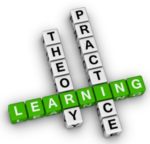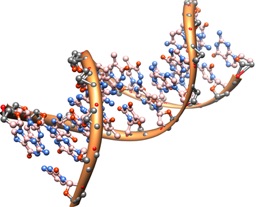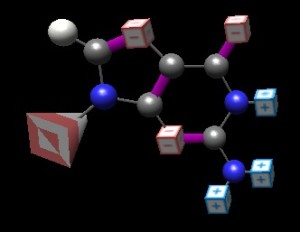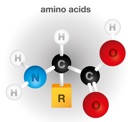 Having participated in teaching biology at a new place, I’ve completed a fresh run as an observer and found myself thinking a lot about introductory biology teaching decisions (the Bob Seger song “Against the Wind” has one of my favorite lines: “Deadlines and commitments/what to leave in… what to leave out.”). It occurred to me that there are two largely separable ways of teaching Introductory Biology that are quite different depending on what we want our students to be able to do. I believe the distinctions are not vastly unlike architects vs. engineers, or theoretical vs. applied physicists. It comes down to whether we want to be exposing our students to the how and why or the how-to and when-to. I’m almost exclusively in the former camp… but if we’re training medical students and technicians for industry, how much of ‘how does this work’ is needed? On the other hand, if we’re trying to attract and prepare P.I. (principal investigator)-level individuals and teach all comers ‘how life works’ alongside the wonders of what has evolved (and how), perhaps I can justify my approach. Continue reading
Having participated in teaching biology at a new place, I’ve completed a fresh run as an observer and found myself thinking a lot about introductory biology teaching decisions (the Bob Seger song “Against the Wind” has one of my favorite lines: “Deadlines and commitments/what to leave in… what to leave out.”). It occurred to me that there are two largely separable ways of teaching Introductory Biology that are quite different depending on what we want our students to be able to do. I believe the distinctions are not vastly unlike architects vs. engineers, or theoretical vs. applied physicists. It comes down to whether we want to be exposing our students to the how and why or the how-to and when-to. I’m almost exclusively in the former camp… but if we’re training medical students and technicians for industry, how much of ‘how does this work’ is needed? On the other hand, if we’re trying to attract and prepare P.I. (principal investigator)-level individuals and teach all comers ‘how life works’ alongside the wonders of what has evolved (and how), perhaps I can justify my approach. Continue reading
Sense of things
Pull yourself together! Self-assembly in biology
 Lists of the ‘characteristics of life’ are a common element in introductory biology early lectures. Generally, these focus on movement, energy conversion, organization, etc.–all legitimate concepts. But the role of self-assembly in biology must not be underestimated; it’s a key feature of the flow of information in the Central Dogma (through the specific partnering of bases), folding of proteins from linear strings of amino acids (readily specified by linear structure of nucleic acids) gives rise to the functioning machines at the heart of almost all cellular work and action, and even membranes, while not members of the Central Dogma club, have function that relies critically on aspects of self-assembly. Without these properties, life would not only be impossible–they’re prerequisites for life to evolve from non-life.
Lists of the ‘characteristics of life’ are a common element in introductory biology early lectures. Generally, these focus on movement, energy conversion, organization, etc.–all legitimate concepts. But the role of self-assembly in biology must not be underestimated; it’s a key feature of the flow of information in the Central Dogma (through the specific partnering of bases), folding of proteins from linear strings of amino acids (readily specified by linear structure of nucleic acids) gives rise to the functioning machines at the heart of almost all cellular work and action, and even membranes, while not members of the Central Dogma club, have function that relies critically on aspects of self-assembly. Without these properties, life would not only be impossible–they’re prerequisites for life to evolve from non-life.
Molecule display in introductory biology
 Teaching the world of molecules to relative newcomers is challenging because it’s an invisible world with ‘rules’ that don’t always have a 1-to-1 correspondence with the macroscopic world (looking at you, hydrophobicity). A second issue is that while the molecules themselves are concrete things, we discuss them using their labels–A or adenine or glucose or ‘protein’. Too often, students end up with vague notions (or none at all) about these entities. Given that everything in the cell is made of and run by molecules, student success in thinking and understanding is critically dependent on what they’re picturing as molecules. I think care in and improvements of molecule display can go a long way towards making their lives easier and their understandings richer.
Teaching the world of molecules to relative newcomers is challenging because it’s an invisible world with ‘rules’ that don’t always have a 1-to-1 correspondence with the macroscopic world (looking at you, hydrophobicity). A second issue is that while the molecules themselves are concrete things, we discuss them using their labels–A or adenine or glucose or ‘protein’. Too often, students end up with vague notions (or none at all) about these entities. Given that everything in the cell is made of and run by molecules, student success in thinking and understanding is critically dependent on what they’re picturing as molecules. I think care in and improvements of molecule display can go a long way towards making their lives easier and their understandings richer.
Amino acid building blocks: components for life’s machines
 Understanding the cellular roles of DNA and protein is challenging because they are, in important and meaningful ways, not analogous to anything in the macroscopic world. Proteins are a fascinating study: while cars, watches and houses are built by specialized builders, a single master factory, the ribosome, strings together all cellular proteins. And in a richly meaningful sense, that string then assembles itself (folds) into its final form. And the machines of the cell are almost unimaginably diverse in their forms and functions, the latter of which derive once again from within: the amino acid building blocks and precisely where they come to rest in the final three dimensional structure.
Understanding the cellular roles of DNA and protein is challenging because they are, in important and meaningful ways, not analogous to anything in the macroscopic world. Proteins are a fascinating study: while cars, watches and houses are built by specialized builders, a single master factory, the ribosome, strings together all cellular proteins. And in a richly meaningful sense, that string then assembles itself (folds) into its final form. And the machines of the cell are almost unimaginably diverse in their forms and functions, the latter of which derive once again from within: the amino acid building blocks and precisely where they come to rest in the final three dimensional structure.
Dependencies and foundations: introductory biology design
 We’ve long since passed the days when a strategy of “Just teach the students everything in the field” even begins to define a good introductory biology (or even specialized biology) course. Alas, this rut has ensnared textbooks; even those that start out nobly slender quickly bulk up to monstrous size. A related problem is the question of topic order–I think the historical approach (generally all the chemistry, a difficult to comprehend overview, then a firehose of detail) is out of touch with modern thinking about learning. As a way out of the maze, I suggest identifying the Big Ideas, selecting powerful, highly interlinked exemplars (hemoglobin profiled in this role here) and keeping a careful eye on what must come before what. In this post, I’d like to present the ideas of dependency (what must be understood prior to introducing a topic) and foundation (what understandings are enabled once the topic is mastered).
We’ve long since passed the days when a strategy of “Just teach the students everything in the field” even begins to define a good introductory biology (or even specialized biology) course. Alas, this rut has ensnared textbooks; even those that start out nobly slender quickly bulk up to monstrous size. A related problem is the question of topic order–I think the historical approach (generally all the chemistry, a difficult to comprehend overview, then a firehose of detail) is out of touch with modern thinking about learning. As a way out of the maze, I suggest identifying the Big Ideas, selecting powerful, highly interlinked exemplars (hemoglobin profiled in this role here) and keeping a careful eye on what must come before what. In this post, I’d like to present the ideas of dependency (what must be understood prior to introducing a topic) and foundation (what understandings are enabled once the topic is mastered).
A mechanistic view of the cell: the glory of because
 Introductory biology can be overwhelming; what we consider to be ‘essential foundation’ could take up an entire undergraduate education. This issue is compounded when we treat the body of knowledge as a collection of names and facts (or when students achieve this view despite our efforts). By viewing the cell as a functioning machine, divided into compartments filled tasks performed by mindless but efficient mechanisms, a course can focus on understanding. A natural framework for student study and learning arises: the mechanics of the cell
Introductory biology can be overwhelming; what we consider to be ‘essential foundation’ could take up an entire undergraduate education. This issue is compounded when we treat the body of knowledge as a collection of names and facts (or when students achieve this view despite our efforts). By viewing the cell as a functioning machine, divided into compartments filled tasks performed by mindless but efficient mechanisms, a course can focus on understanding. A natural framework for student study and learning arises: the mechanics of the cell
